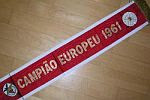Armando Gonçalves Teixeira nasceu a 25 de Setembro 1976 em Strasbourg na França. Os pais dele regressaram a Portugal quando tinha dois anos de idade e estabeleceram-se na fréguesia de Paranhos no Porto onde ele também deu os primeiros toques na bola que iria mudar a sua vida para sempre.
Como junior jogou pelo Bom Pastor e no Boavista, antes de passar alguns anos em clubes modestos de ligas secundárias para mais tarde ingressar no Gil Vicente em 1999. Foi no clube de Barcelos que teve uma evolução enorme, ajudando alcançar a melhor pontuação de sempre e apenas por pouco não conseguir a qualificação para a Taça Uefa.
Isso não passou despercebido no Bessa, para onde voltou na época seguinte e mais uma vez voltou a brilhar. Foi fundamental na única conquista do Campeonato para o Boavista em 2001, para entrar na história como quinto clube em Portugal a vencer um Campeonato. A época espectacular do Boavista, com Petit a brilhar numa equipa forte, merceu-lhe o título individual de "Jogador do ano".
Após mais uma época muito boa, foi contratado pelo Benfica em 2002. O clube da Luz ja não tinha ganho um titulo nacional desde 1996 e procurava estabilidade no meio campo defensivo. Petit, que ganhou a alcunha por ter nascido em Franca, tal como ter uma estatura compacta, também foi ganhando fama como Pitbull, pela sua maneira agressiva de ocupar a sua posição. Foi praticamente titular desde início e tornou-se numa peça fundamental, seja sob qual treinador fosse.
Na sua segunda época ja conseguiu ajudar a vencer a Taça de Portugal que foi uma vitória emocional, ja que em Janeiro o companheiro de equipa, Miklos Feher, tinha falecido em campo e marcou o resto da época para o Benfica. Em 2005 seguiu-se o tão desejado 31° campeonato, que escapava ha 12 anos.
Petit continuou mais três épocas de águia ao peito, deixando o Benfica em 2008 para abraçar uma nova aventura no estrangeiro. Assinou pelo 1. FC Köln, onde foi feliz durante quatro épocas.
Este modelo fez parte dos equipamentos criados pelo centenário do Benfica. O equipamento principal foi estreado a meio da época no derbi de Lisboa a 4 de Janeiro 2004, enquanto o alternativo foi no jogo dos 1/4 finais da Taça contra o Nacional. Ambos foram referências ás primeiras camsiolas que tivemos, sendo interessante que o Benfica apenas em 1943 teve um segundo equipamento. Eles foram utilizados também a época seguinte, e houve pelomenos dois diferentes principais e três alternativos.
Armando Gonçalves Teixeira, better known as Petit, was born on 25th of September in Strasbourg/France. The nickname is direct hint on where he was born, plus a reference to his build.
His parents returned to Portugal when he was 2 years old and settled in the greater Porto area. He started playing in the local club before getting proper education at the Boavista juniors.
After that he started playing for second tier clubs before being discovered by Gil Vicente club in 1999. And here is where the story begins: In his first season he became an important part of the team and helped it reaching the best position ever, only missing by little the qualification to the UEFA Cup. His old club Boavista noticed how he had developed and signed him back in 2000. His ascension continued and he helped the team win the league title, only to become the fifth team in Portugal having won it. Among a strong team he shone brighter and that earned him the title of player of the year.
After another strong season, Benfica signed him to give more stability to the defensive midfield, where he interpreted the role of a 6er very active and strong, so that it earned him the nickname "Pitbull". Benfica hadn`t won any silverware in 6 years and it should be a good decision.
In his second season (he was already a fundamental player), Benfica won the Cup. It was a very emotional victory, as they lost their teammate Miklos Feher during a match a few months earlier. In 2005 then, finally, the so much desired 31st championship.
Petit played for Benfica during three more seasons, lining up in more than 200 matches before the embraced a new adventure, that was leaving Portugal and play abroad. He signed for 1. FC Köln, where he spent four more seasons before hanging his boots.
This shirt is part of the kits created for the centenary of the club. The homekit was introduced for the derby of Lisbon on 4th of January 2004, while the away kit had its first appearance in the Cup match vs Nacional, a few weeks later. Both are a reminiscence to the first ever so used kits. Fun fact: the first alternative kit we had only appeared in 1943.
The kits were used half of the 03/04 season and full season 05/06 and i know of at least two versions of the homekit and three of the away kit.
Jogo/ match: conhecido/known
Fornecedor/ outfitter: Adidas



















